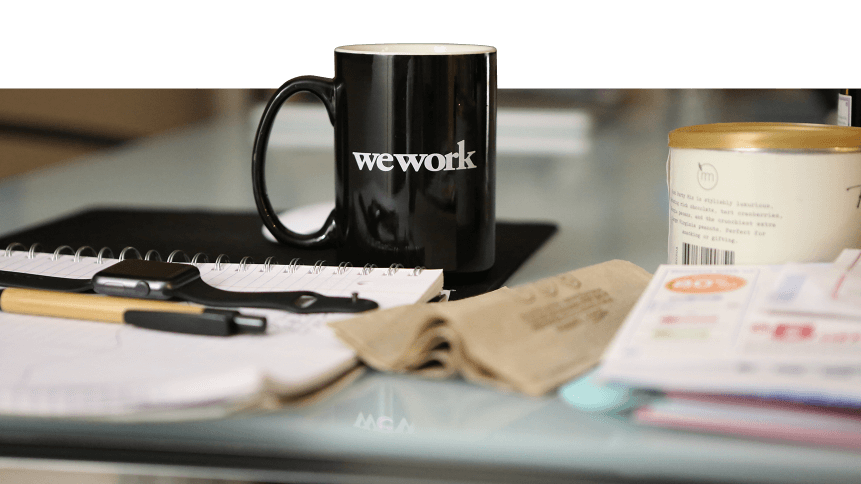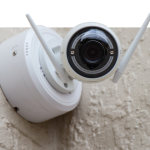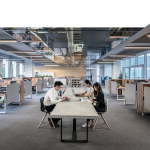Four trends driving workplace tech adoption

Talk about the future of work, and technology is more than likely going to feature in the discussion.
Whether it’s cloud solutions, automation programs, IoT (Internet of Things), no shortage of technologies are now at our disposal at increasingly low costs, promising to overhaul how our businesses operate internally.
While it’s easy to throw money at new solutions, however, technology’s real staying power lies in its reception among staff and how it affects workplace behavior.
As we strive towards the ideals of a ‘digital workplace’, Aruba Networks— a California-based wireless networking subsidiary of HP— conducted a global study of 7,000 employees across 15 countries to understand the factors of employee-driven changes in the workplace.
The study turned out four trends surrounding the role of technology in the workplace, the impact it’s having on employees and the business, and the challenges its adoption faces.
# 1 | Employees expect digital by default
Businesses are increasingly communicating and doing business over digital channels, but rather than just modernizing ‘traditional’ work approaches with new tools— smartphones, secure wifi, etc— this new technology is changing how we do things altogether.
Adoption of standard technologies such as cloud and cybersecurity is prevalent in business, but technology is now blurring the lines between facilities and IT-managed functions. IoT (Internet of Things) is automating temperature and lighting, conference AV technology is voice-activated, and bespoke corporate apps can share location data.
This is largely driven by the consumerization of technology. Employees now demand ‘digital default’ workplaces, says Aruba, with just shy of two-thirds (64 percent) believing their business will fall behind if it doesn’t integrate new tech, and 71 percent believing their workplace should be fully automated in the future.
As home automation tech permeates their personal lives, employees are increasingly demanding digital working environments that make ‘everything’— whether it’s booking a meeting room or controlling the office climate— more efficient.
“Today’s digital workplace is moving beyond a traditional office environment with technology bolted on, to one in which the entire infrastructure and physical space are designed around, and optimized through, digital tools,” read the report.
# 2 | Tech brings employee satisfaction
With the last point in mind, not every organization is progressing at the same level in a bid to become a fully-digital workplace.
As such, the report identified a divide between those in workplaces where digital tools are in widespread use, “Digital Revolutionaries”, and those whose working environments lack digital tools, “Digital Laggards”.
Besides improvements to efficiency and productivity, the report found Digital Revolutionaries enjoyed “significant personal satisfaction and wellbeing advantages” as a result of digital workplaces, and are more open to its benefits.
From work-life balance to personal motivation and professional development, Revolutionaries recorded significantly higher levels of personal and professional gains. Almost three quarters (74 percent) said their job satisfaction is good or very good, while 70% reported their work-life balance to be good.
Revolutionaries were also 59 percent more likely than Laggards to say that they were learning new skills in the workplace, 61 percent more likely to say that they effectively accomplished multiple tasks during the day, and 65 percent more likely to believe their role is strategic to their organization.
# 3 | More connected means more vulnerable
A digital workplace evidently brings a lot of benefits, but a more connected organization also makes a more vulnerable one to cybersecurity risks.
Companies investing in digital and connected physical infrastructure must match their efforts with more to ensure compliance around information security and data privacy. While more than three-quarters (77 percent) said cybersecurity was very or extremely important, businesses must make sure their employees are well aware of the risks and what can be done to mitigate them.
Employees continue to engage in risky online behavior, including connecting to potentially unsafe open wifi (25 percent) and allowing someone else to use their device (17 percent). Seventy percent admitted to “some kind” of risky online behavior in the last year, whether that is sharing or duplicating their password, copying work files onto a personal device or connecting to an unknown network.
“It is not enough for organizations to invest in secure networks and cyber software; they also need to acknowledge the risks posed by human error,” Aruba states, “and to understand the irony that it may be the more digitally inclined employee who poses a greater risk than the one who knows and cares less about the cyber threat.”
# 4 | Employees believe in tech-driven change
Regardless of whether a Digital Revolutionary or a Digital Laggard, the report found a unanimous belief (93 percent) among respondents that increased use of digital technology will lead to workplace improvements.
Enhancements driven by the adoption of automation and machine learning were expected to drive workplace efficiency (56 percent), collaboration (52 percent) and create a more “appealing” work environment (47 percent). Meanwhile, more than half (57 percent) would be happy to share more personal data in return for personalized tools and experiences.
Seventy-one percent of employees would welcome an automated workplace, where working conditions, including light and temperature, could be adjusted in real time to personal preferences, while the same percentage were in favor of implementing biometric security.
Ultimately, increased automation across the breadth of the workplace was considered by employees to provide better opportunities for learning new skills and moving into more strategic roles.
The transforming workplace
“The very nature of the term ‘workplace’ is being transformed, as companies begin to realize that effective space is experience-centric, and must accommodate work styles spanning generations and personality types,” said Francisco Acoba, Managing Director for Deloitte Strategy & Operations.
“This ushers in new processes where IT solutions, building systems and furnishings interact harmoniously with humans to create such spaces. Regardless of your enterprise’s specific situation, when spaces become active participants in the user experience it benefits the bottom line.
“After all, workers who feel comfortable in a space get their tasks done. Those who don’t will eventually move on to a more inviting option,” said Acoba.











